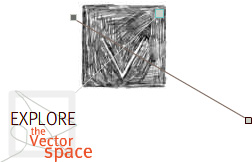Hurricane Digital Memory Bank
Preserving the Stories of Katrina, Rita, and Wilma
Editor's Introduction
Caught in the midst of an ongoing research project, I have logged many hours in the archives at the Library of Congress. To enter this archive is to enter a rarified space, a quiet zone accessed only with a special ID card and a trip through a metal detector. No pens are allowed and no paper. The histories collected here are special and guarded. They unfold for the scholar and the expert, for those with credentials. But what if we thought about the archive differently, as a place of open access and limited gatekeeping? Digital technologies can help animate the archive in meaningful ways, pointing toward new modes of memory and history that engage the spirit of open access and democratic exchange while also undertaking very crucial work in cultural preservation. The Hurricane Digital Memory Bank (HDMB) provides a vibrant model of just such an endeavor, functioning as a re-imagined archive, one conceived for the present and the future.
Over 500 images, numerous stories, and diverse other files -- including podcasts, PDFs, and more -- chronicle the powerful storms that ravaged the Gulf Coast region in fall 2005 and document the experiences of those affected by the worst hurricane season in recorded history. As the user traverses the words and pictures gathered here, the human and material costs of the hurricanes come into more powerful relief, adding a new level of granularity, intimacy, and poignancy to mainstream media accounts. We know that Hurricane Katrina unleashed the largest displacement in U.S. history; HDMB layers that knowledge with detailed meanings and diverse voices. In my introduction to the second issue of Vectors, I commented on the limits of putting too much faith in technology when faced with a disaster like Katrina. HDMB suggests that technology can also help us connect, remember, and perhaps heal.
The website reconfigures the goals of traditional oral history projects via a meaningful collision with electronic media, creating a space not only for the preservation of memory and experience (a lofty aim in and of itself) but also for emergent modes of interpretation and knowledge management. For instance, the site's 'map browser' allows users to pinpoint the geographic location of a story or an image, while also inviting a comparative analysis of how different neighborhoods or regions were impacted. The site's search function allows this archive to respond to its viewers own interests and desires, while the 'contribute' field encourages additions and reflections, opening the collection up to expansion and growth. To date, many of the pieces published in Vectors in some way work as analogues to more traditional scholarly artifacts, re-making and re-imagining the article in rich multimedia dimensions or supplementing the constraints of the monograph via an expanded archive. Projects like this one push in another direction that the journal is eager to explore, toward a more connected and networked scholarly vernacular.
HDMB simultaneously displays and extends the pioneering work undertaken by the Center for History and New Media at George Mason University. Since the early 1990s, the Center has actively modeled vibrant new modes of public history while exploring the power of the internet to expand our conceptions of what counts in and as an archive. Their work troubles a number of binaries long reified by history scholars (and humanities scholars more generally), including one/many, closed/open, expert/amateur, scholarship/journalism, and research/pedagogy. We are pleased to feature their work here.



